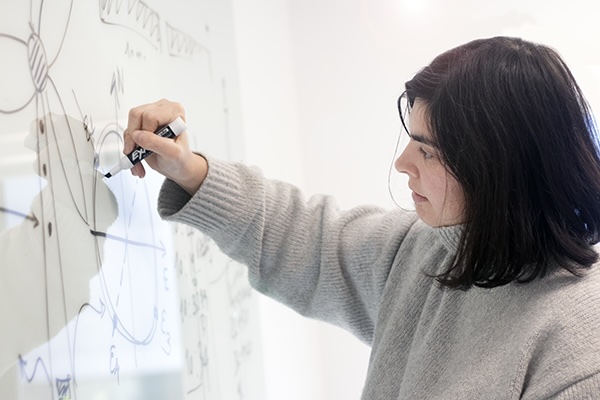Improving Structural Health and Climate Change with Machine Learning

Main image: Since joining the Department of Civil and Environmental Engineering in Sept. 2023 as an Assistant Professor, Eleonora Tronci has been working to incorporate her current research into the department’s urban engineering focus.
CEE Assistant Professor Eleonora Tronci is a structural engineer who uses machine learning to assess damage in civil structures and optimize wind farms while focusing on the adaptability of her research to climate change.
With a focus on structural health monitoring, Tronci’s educational background includes a PhD in Civil Engineering from Columbia University and a PhD in Structural Engineering from Sapienza University. Her research interests include applied machine learning for damage assessment in civil structures, multi-domain transfer learning and performance and structural assessment of offshore wind structures.
Prof. Tronci said that she has “always preferred the applied side of engineering.” She is interested in managing existing structures and their structural condition, exploring how these findings could help design more resilient infrastructure and structural systems in the future.
Within multi-domain transfer learning, Tronci leverages intersectional knowledge to structural engineering. For example, she has studied the similarities in the characteristics of human voice recordings and the response of structural systems, investigating how this similarity can be leveraged to determine if a structure is damaged when monitoring data is lacking.
“Our voice has a specific frequency content based on vocal tract shape,” she said. “When damage occurs in a structure, the frequency changes, like when your voice changes when you have a cold… The voice of a structure is in its vibration response.”
Tronci praised the value of leveraging intersectional knowledge to your studies from a subject you never would’ve thought would apply.
Tronci is also interested in offshore wind harnessing, particularly how the information gathered by a wind farm can be optimized. She shared how just one wind turbine in a farm can be instrumented and leveraged to provide data about the whole farm, which minimizes costs for windshore projects.
Moving forward, Tronci would like to focus on the adaptability of her research to climate change.
As the climate changes, environmental variables accounted for in structural design will also change, inevitably affecting the response and durability of infrastructure systems, lowering the usefulness of historical data. Additionally, changes in the wind dynamics will affect the wind farms power production and their remaining life.
“Years and years of data will be modified by climate change,” she said.
Tronci thinks that students “bring a fresh point of view.” She’s in the University’s UPLIFT program. Her goal is to work with people who are interested in the same things as her. She can also facilitate students wanting to study abroad who are interested in these same topics.
“My door is open,” she said.